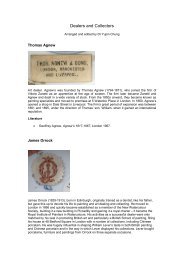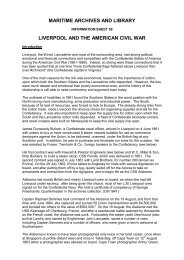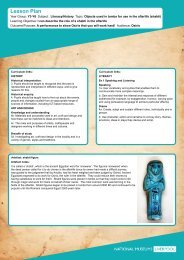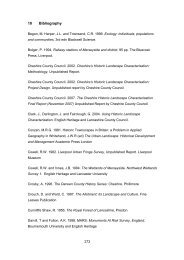women in maritime records - National Museums Liverpool
women in maritime records - National Museums Liverpool
women in maritime records - National Museums Liverpool
You also want an ePaper? Increase the reach of your titles
YUMPU automatically turns print PDFs into web optimized ePapers that Google loves.
Voyage narrative of George Hiscock, The Barque Inverness-shire, c.1910.Description of a late even<strong>in</strong>g scene on the dockside <strong>in</strong>volv<strong>in</strong>g a group of seafarers and their<strong>women</strong> companions return<strong>in</strong>g to the ship.DX/1705Registration Card of Cooper's Wife, for the <strong>Liverpool</strong> Coppers' Friendly Trade & BurialSociety, 1920.DX/779War Time Women DockersAs with many professions dur<strong>in</strong>g war time, <strong>women</strong> were called on to take on jobs previouslydone by men, and this was the case <strong>in</strong> the <strong>Liverpool</strong> Docks dur<strong>in</strong>g the First and SecondWorld Wars.In early March 1916 due to the shortage of male dockers, around 30-50 <strong>women</strong> were takenon at Huskisson Dock, work<strong>in</strong>g as porters mov<strong>in</strong>g the unloaded cotton <strong>in</strong>to the Leyland L<strong>in</strong>ewarehouses on trucks. These <strong>women</strong> were employed for around three weeks untilopposition from the male dockers and their union forced the company to cease theiremployment.Around the same time <strong>women</strong> were also taken on by Harrison L<strong>in</strong>e at Toxteth Dock tounload their ships but aga<strong>in</strong>, the men refused to work with them and backed by the union,the employers ceased to employ females as dockers. By 20 March 1916, the <strong>Liverpool</strong>Courier reported that there were no longer any <strong>women</strong> employed as dockers. (Source:Women's Work on the Waterfront)Although <strong>women</strong> never worked as dockers aga<strong>in</strong> at <strong>Liverpool</strong> Docks, they were employeddur<strong>in</strong>g the Second World War as sweepers, aga<strong>in</strong> to replace the men who had been calledup to active service. These <strong>women</strong> worked <strong>in</strong> Alexandra, Gladstone and Seaforth Docks,sweep<strong>in</strong>g up the sheds after they had been emptied of their cargo of tea. This labour<strong>in</strong>tensive job did come with the added bonus of be<strong>in</strong>g able to salvage tea from the floors tosupplement tea rations. (Source: Women's Work on the Waterfront, p. 22)Women as SeafarersWomen were employed on ships from around the 1860s when shipp<strong>in</strong>g companies began tosee the benefit of employ<strong>in</strong>g <strong>women</strong> as stewardesses to care for their female passengersand children. As time passed, <strong>women</strong> seafarers began to be employed <strong>in</strong> all the traditionalfemale car<strong>in</strong>g roles such as matrons, stewardesses, laundresses, hairdressers and shopassistants. As shore based staff, <strong>women</strong> were employed by shipp<strong>in</strong>g companies as officeclerks, typists, cleaners and also <strong>in</strong> the shipp<strong>in</strong>g companies' own canteens.Shipp<strong>in</strong>g company archives can be a major source of <strong>in</strong>formation on the careers of late 19 thand 20 th Century merchant seafarers, as they often conta<strong>in</strong> staff <strong>records</strong> such as apprenticeand officer registers, wage books, as well as operational and fleet <strong>records</strong> such as logs andphotographs.The Maritime Archives & Library hold many examples of seafarers career papers, ma<strong>in</strong>lybelong<strong>in</strong>g to masters and seamen, although a small number do relate to <strong>women</strong> seafarers.3



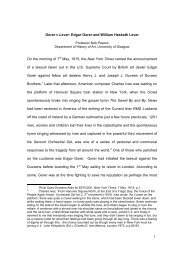
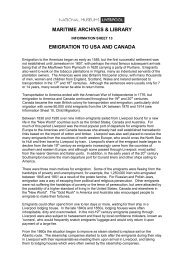
![Ancient Egypt trail [227kb .pdf] - National Museums Liverpool](https://img.yumpu.com/48998817/1/184x260/ancient-egypt-trail-227kb-pdf-national-museums-liverpool.jpg?quality=85)

